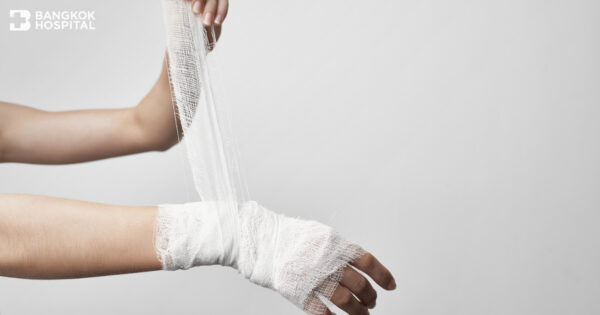Wound is a type of injury which happens quickly when skin is torn, cut or punctured. Based upon wound healing process, there are 2 types of wounds: acute wounds and chronic wounds. Wound healing process in acute wounds expresses in a timely fashion. An acute wound becomes a chronic wound when it does not follow the correct healing stages, resulting in a prolonged recovery and other complications such as infections. Besides identifying the causes of chronic wounds, a comprehensive wound care is essential to heal chronic wounds and prevent possible complications that might potentially arise.
Acute wounds VS. chronic wounds
- Acute wounds are those that normally heal through the routine processes of hemostasis, inflammation, proliferation and remodeling. Wound healing process in acute wounds follows routine mechanisms. An acute wound becomes a chronic wound when it does not follow the correct healing stages, resulting in a delayed recovery.
- Chronic wounds refer to the wounds which do not show significant healing within four weeks. If acute wounds progress into chronic wounds, further medical attention is highly needed to remove the wound from its stalled state.
Wound healing processes
Although the stages of wound healing are linear, wounds can progress backward or forward depending on internal and external patient conditions. The four stages of wound healing are:
- Hemostasis phase (takes 1-3 days): The first process of wound healing is hemostasis. It is the process of the wound being quickly closed by clotting.
- Inflammatory phase (takes less than 1 week): Inflammation helps controlling bleeding and preventing infection. During the inflammatory phase, damaged cells and pathogens are removed from the wound area by white blood cells (leukocytes) and macrophage cells. During this phase, the swelling, heat, pain and redness are commonly seen.
- Proliferative phase (takes 2-3 weeks): The proliferative phase of wound healing happens when the wound is rebuilt with new tissue made up of collagen and extracellular matrix. A new network of blood vessels will be constructed, so granulation tissue can be healthy and receive sufficient oxygen and nutrients. Collagen deposition subsequently happens to increase the strength of the wound.
- Maturation phase or remodeling phase (takes up to years): During the maturation phase, collagen is aligned along tension lines and water is reabsorbed. Cross-linking of collagen reduces scar thickness and also makes the skin area of the wound stronger.
Since the stages of wound healing are complicated, failure to progress in the stages of wound healing can lead to chronic wounds. In chronic wounds, inflammatory phase keeps continuing, therefore proliferative phase is prolonged. To treat chronic wounds, causes of constant inflammation must be addressed and treated accordingly.
Causes of chronic wounds
Chronic wounds can be caused by a wide range of medical conditions, including:
- Diabetic ulcers, especially diabetic foot;
- Bedsores or pressure sores caused by sustained pressure, often from a bed or wheelchair;
- Vascular ulcers which are chronic or long term, breaches in the skin caused by problems with the vascular system; and
- Accidental wounds with inappropriate wound care.
A comprehensive care for chronic wounds
To effectively treat chronic wounds, advanced wound care involves:
- Identifying the causes of chronic wounds such as pressure on or around the wound, exposure to bacteria or trauma, poor hygiene and insufficient blood supply and oxygen;
- Wound dressing and removal of dead tissue (debridement);
- Administration of antibiotics to prevent or treats infections; and
- Advanced technology and medical equipment e.g. hyperbaric oxygen therapy (HBOT) that help enhancing wound healing process.
Besides appropriate treatment plans supported by medical technology in wound care, expertise of doctors and multidisciplinary team approach act as a key to achieve the treatment goals in chronic wound care. In addition, unique treatment plans are customized, depending on individual conditions and underlying diseases.









